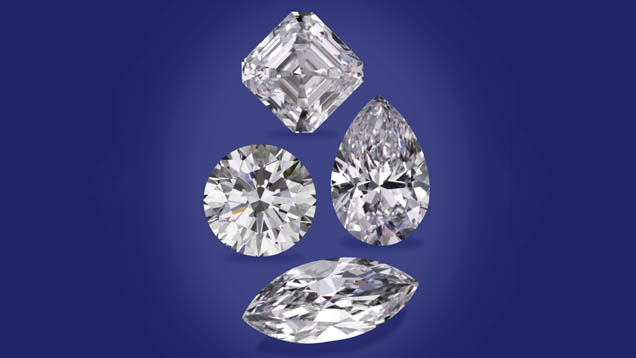Introduction to HPHT vs CVD
Concerning diamonds, the conversation among HPHT and CVD looks like differentiating apples and oranges. The two cycles produce wonderful, top score diamonds, but they do as such in altogether different ways. In case you’re contemplating buying a lab-grown diamond or just curious about the qualifications, you’re impeccably situated. This guide will isolate all that you truly need to know about HPHT (High Strain High Temperature) and CVD (Substance Smoke Proclamation) diamonds, helping you with making a good choice.
What is HPHT?
History of HPHT
HPHT, or High Strain High Temperature, is a method for making diamonds that reflects the typical conditions under which diamonds structure On the planet’s mantle. The cycle incorporates recreating the outrageous strain and high temperatures found profound inside the Earth to foster diamonds hpht vs cvd. This technique has been around since the 1950s and was at first advanced to make synthetic diamonds for current use.
How HPHT Diamonds Are Made
The HPHT cycle starts with just enough diamond seed, which is set in a press that can duplicate the high-pressure environment of the World’s mantle. Carbon is then familiar and persecuted with ridiculous temperatures and strains. For a really long time, the carbon cements around the seed, outlining a diamond. This cycle can require a portion of a month, achieving diamonds that are synthetically and essentially undefined from customary diamonds.
What is CVD?
History of CVD
CVD, or Substance Smoke Declaration, is a more current technique diverged from HPHT. It emerged during the 1980s as a way to convey diamonds in a controlled environment. This methodology uses a compound reaction to store carbon atoms onto a substrate, where they gradually structure diamond pearls. While it started out as a procedure for making pitiful films for contraptions, it has since transformed into a well known method for making gem quality diamonds.
How CVD Diamonds Are Made
In the CVD cycle, a diamond seed is set in a vacuum chamber, where a carbon-rich gas, similar to methane, is introduced. The gas is ionized using high-energy sources like microwaves, making the carbon atoms store onto the seed in a controlled way. This cycle can require a portion of a month to some time, dependent upon the best size and nature of the diamond. The result is a diamond with a tantamount part of ordinary diamonds, yet grown in a laboratory setting.
Key Differences Among HPHT and CVD
Quality and Robustness
Concerning quality, both HPHT and CVD diamonds are fundamentally vague from normal diamonds to the independent eye. Anyway, there are inconspicuous differentiations. HPHT diamonds might a portion of the time at any point show a fairly more uncommon assortment, while CVD diamonds could show a touch more fluorescence. The two sorts are tough and can be used in fine pearls.
Cost Assessment
Cost is often a distinct advantage for certain buyers. Overall, CVD diamonds are more reasonable than HPHT diamonds. This is in light of the fact that the CVD communication is more proficient and considers more accurate control over the diamond’s turn of events, making it less excessive to make. HPHT diamonds, then once more, require more energy and resources, which can drive up their expense.
Environmental Impact
If you’re stressed over normal legitimacy, CVD diamonds could have the edge. The CVD cycle will overall be less energy-raised appeared differently in relation to HPHT, which requires high temperatures and pressures. Furthermore, CVD diamonds can be conveyed with less petroleum derivative side-effects and less normal interference.
Applications and Uses
Both HPHT and CVD diamonds are used for different applications. While HPHT diamonds are often liked for their outrageous tone and brilliance, CVD diamonds are notable for their temperance and moderateness. The two sorts are used in pearls, current applications, and, shockingly, in legitimate assessment.
Which is Better for Embellishments?
Picking either HPHT and CVD diamonds for embellishments finally reduces to individual tendency and monetary arrangement. HPHT diamonds could address those looking for a more regular technique with conceivably more extreme assortments, while CVD diamonds offer a bleeding edge, canny elective with a clean, consistent look.
Buyer Tendencies
With respect to buyer tendencies, there is no sensible victor. A couple of buyers could lean toward the historical and customary pieces of HPHT diamonds, while others could lean towards the innovative and innocuous to the environment thought of CVD diamonds. Everything spins around what has the greatest effect on you in a diamond.
Man made diamonds, also known as synthetic or cultured diamonds, represent a remarkable advancement in gemstone technology. Created in controlled environments that replicate the natural conditions under which diamonds form, these gems are virtually identical to their natural counterparts in terms of physical and chemical properties.
Market Examples
Market designs exhibit that both HPHT and CVD diamonds are procuring distinction. As advancement advances and more customers become aware of the upsides of lab-grown diamonds, the two sorts should see continued with improvement keeping watch. Understanding these examples can help you with making a more good choice.
Keep going Contemplations on HPHT vs CVD
In conclusion, both HPHT and CVD diamonds have their clever resources and characteristics. Whether you’re drawn to the customary appeal of HPHT diamonds or the high level proficiency of CVD diamonds, you can be ensured that the two decisions offer prevalent grade, great stones. The choice ultimately depends upon your tendencies, spending plan, and values. By understanding the differentiations and comparable qualities between these two methodologies, you can seek after an informed choice that lines up with your necessities and needs.









